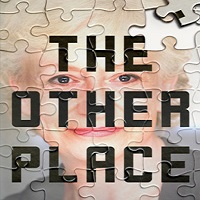Life as THE OTHER PLACE: An interview with Jane Ridley, actor and theater professor.
Background: UK and US Childhood
Henrik: You were born in the UK and were briefly transplanted to the US as a child.
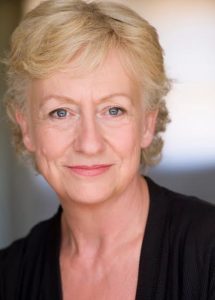
Jane: Yes. My parents, siblings, and I lived in the States for two years when I was 8 and 9. We lived in Golf, Illinois, for a year and spent the second year on Long Island, NY, where my Dad was working. He used his acting chops performing at enormous Trade Shows in arenas like San Francisco’s Cow Palace.
That was when my love affair with America began. It was a wonderful place to be for a kid in the late 1950s. We returned to England and for a time I hung onto my American accent on purpose. [She smiles.]
For some people leading a nomadic life can be problematic.
Not me. We moved every three years or so throughout my childhood and adolescence. It gave me a taste for travel and adventure. One of the things about growing up with peripatetic [travelling and nomadic] parents was that I got the chance to reinvent myself on a regular basis. Mistakes and baggage could be left behind, a new leaf could be turned—and frequently was.
Growing up with Theater
Tell us about your father, the actor.
My Dad, John Maurice Llewellyn Ridley—there’s a moniker for you—was a professional actor when he met my Mum and continued to work as a semi-pro after marriage and kids. His Falstaff in Henry IV Part One at the Ashcroft Theatre in Croydon, Surrey, was absolutely marvelous. Toby Belch in Twelfth Night at the same theater also vividly remains in my memory. He worked at the Chichester Festival Theatre, and also at a spectacular outdoor venue at Polesdon Lacey – a huge stately home, which Richard Brinsley Sheridan, the poet and playwright, had bought in 1804.
He clearly loved Shakespeare.
Yes, Shakespeare was his passion, so much so that when he was well into his 70s, he compiled a theater piece for me entitled Golden Girls of the Globe—a collection of scenes and monologues from Shakespeare’s women, strung together with his narration. I adapted it for a cast of 20 plus at Penn State University where I taught for 25 years. He was unable to make the trip to the US, but the video of the production became a favorite of his.
Tell us about your theater background.
I was incredibly fortunate to be accepted into Birmingham College of Education [in the UK] after High School. I majored in Drama and minored in Dance. I learned how to teach and had some wonderful classes in movement, acting and voice which, combined with having essentially grown up in the theater, gave me a solid background in plays and use of language.
Given that background, acting must have come easily.
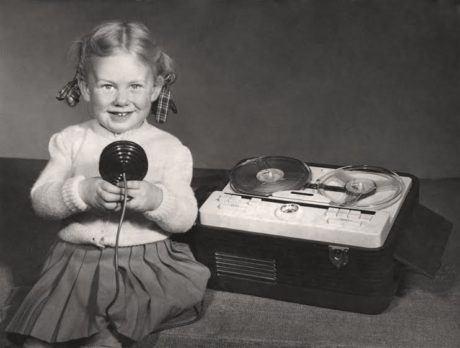
Well, from a very early age, I was sitting on a theater seat late at night while technical rehearsals happened around me. I knew oh-so-early that the theater is not a glamorous place to work, that it is indeed “work”—a great deal of work. However, I also realized that I could not envision myself doing anything else with my life.
Studying in the US
A few things happened that greatly impacted your life in the theater.
Indeed. In the 1970s, I found myself freshly married to a marvelous Welshman whom I had met in Birmingham and who was in the process of pursuing a Ph.D. in Biochemistry at Ohio State [University]. To be with him, I moved to Columbus.
As I wandered into the theater department, I began a conversation that changed the entire course of my life. I had never heard of an MFA degree [in acting]. I asked if I could audition, stayed up all night preparing, and showed up at 8 AM the following day. They accepted me on the spot. I had no idea how lucky I was or what was about to happen to this 22-year-old English woman.
Did you experience any culture shocks in the US?
Ah yes, culture shock. I had just arrived in the fall of ’70, shortly after the deadly Kent State shootings. The police presence in the streets of Columbus, Ohio, was mighty. At about 11 PM, we were driving through the university district and observed police officers who grabbed some students who had just come out of a McDonald’s—even though they clearly hadn’t done anything.
I immediately wanted to stop the van and get out to explain to the police what I had seen, but my American friends wouldn’t let me. This was the first time I had ever seen anyone be afraid of the police. That awareness, alas, has only grown over the last years.
Did you experience culture shock in the academic world, too?
Yes, as a teaching assistant at Ohio State, it was part of my job to grade papers for a survey theater course. I found myself reading student papers that were at the level of fifteen-year-olds back in England.
Also, the whole idea of multiple choice testing was a mystery to me. How could multiple choice tests possibly demonstrate a handle on the material that would allow the student to think and problem solve? Since then, I have made peace with those realities.
Who were some of the theater teachers who had the greatest impact on you?
I had some marvelous professors in the Theatre Department, especially my movement teacher and Mentor, Richard Nichols, from whom I learned mask work, juggling, mime, stage combat, animal study, and so many other movement techniques for the actor. He was the instigator of all the work I have done since, both as a teacher and as a performer. Richard passed along to me the tradition of movement training that has produced some of the most exciting theater professionals of this century.
He had studied under Arne Zaslove, who had worked with the great master teacher Jaques LeCoq. Years later, I lucked out when I had the opportunity to take an extended workshop with LeCoq in Bethlehem, PA.
That’s quite an education. How did you transition from there to the theater world?
I moved straight to New York to pound the pavement, wait tables, model shoes, and demonstrate toys—and of course, audition and eventually act, both in town and regionally.
Did you return to Britain after you had finished your studies?
I thought that I would stay in the US for just three years. However, I never returned to the UK to live and have called America home for the past 47 years.
Overall, how much did both your educational and your theater experiences impact your career?
I have worked as a character actor, teacher, coach, and fight choreographer for the past 45 years—all due to the training I received in these early years.
Life as a professional theater artist
Looking back, how would you describe your acting then and now?
Well, starting out in my career, I was never one thing or the other. Not an ingénue [an innocent or unsophisticated young woman]—too quirky. Not a leading lady—too short. But what I could always do was inhabit characters physically and vocally who did not behave as I did. I even played Miss Daisy [in Driving Miss Daisy by Alfred Uhry] when I was in my early 40s. The skill is akin to mask work—another side of LeCoq’s training.
There is something about putting on a mask that gives me permission to experience the world from another perspective. The same thing happens when you make the smallest of changes to your physical behavior. A change in accent, or breath pattern, or posture will change the way we see and process the world. Finding the right changes to make for a character expressing the circumstances of their life as given in the play is an essential part of that process.
What, ultimately, is the secret of your acting and growing in the process—especially with the most demanding roles?
I wish I had a magic answer. However, I do have a sort of rule of thumb—if a theater opportunity comes up and it scares me—I pretty much know that I should do it. I will learn something and I will grow.
Over the course of time, you have become not only a great actor, but also a fight choreographer and an accent coach—all demanding professions. Tell us about the best parts of those careers and their challenges.
The truth is I have found myself in the right place at the right time so often that it looks like my career choices were just that—choices. The skills that I have to share as a teacher and coach came originally from training and gradually from the experience of the years in this fantastic business.
I stopped choreographing fights some years ago. Since that time my dialect coaching has increased. Most recently, at the Fulton Theatre in Lancaster, PA—another gem of a theater from the 1800s—I worked with the actors on their accents for the musical Billy Elliot.
Theater in the academic world
You worked as a theater professor at major universities for many years. Did you ever feel sidetracked in your acting career?
Quick story: when I turned 30, I decided that I no longer wanted to live in the city of New York. I had worked there for seven years, was having some success, but I knew I wanted a different kind of life. Green trees and the like. I was offered a teaching job at Virginia Tech. Did it scare me? “Hell yes!” So I accepted and moved myself in a 14-foot truck from the Bronx to the countryside of Virginia. Never regretted it.
I have taught there, and at the University of Washington in Seattle, at the University of California in Santa Barbara, and at Penn State University in State College. In none of these fabulous schools was I expected to give up acting, choreographing, or the voice work. I found myself in the enviable situation of spending a life in the professions I love—each avenue feeding the other.
Cutting edge theater
You worked with playwrights on developing their scripts.
My interest in the making of plays began in the late 1980s when I became involved with The Shenandoah International Playwrights Retreat. Each summer, a group of actors, directors, and dramaturgs was hired to serve a group of playwrights in the development of their plays. The yearly gathering took place at the Pennyroyal Farm outside Staunton, Virginia. We were housed locally and fed three meals a day out on the farm. It was magic. Talk about character work.
We actors workshopped plays from morn till night, playing everything required. I learned a great deal about play structure during those years.
Tell us more about the symbiotic relationship between playwrights and actors.
The pressure was on the playwrights and not the actors, so the risks taken were many and the work soared. I have been fortunate to be hired to play some of the roles that I helped develop. There is nothing quite like reading a published play and finding a line or two that I coined during an improvisation. [She smiles.] Many of those artists are still in my life.
Tell us about your introduction to cooperative, devised work.
In later years, I became fascinated with the work of companies like Shared Experience and Theatre Complicite, both based in London and maybe the most well-known in the US. Companies that make their own work from novels or stories—or even from whole cloth: artists who take the written stories and find ways to turn them into action.
Could you give an example or two?
I particularly responded to the non-literal storytelling techniques of Shared Experience. Two instances spring to mind. I recall one character being played by three different actors expressing three differing sides of the same person.
I also remember a most marvelous scene of a man simply sitting at a table in stillness, experiencing great frustration, and then physicalizing the interior of that frustration by exploding all over the room and ending up right back at the table in the same position. He began giving me the clear understanding that I had seen what was happening inside the man—something that was not visible to the other characters on stage.
The audience apparently participates in the inner workings of characters.
Yes, indeed. Their constant invitation to the audience is to come along for the ride. Their physical storytelling is second to none. We sit in the theater and supply the other half of the imagination equation.
The best example of this on the stage at present is The Curious Incident of the Dog in the Night Time, currently on tour across the US. Another particularly wonderful example is the National Theatre of Great Britain’s production of War Horse. I think at the most basic level, my understanding of storytelling became honed by the work on development with these companies.
You have studied theater not only at the university level, but you also explored theater in a number of different countries.
Yes. In Europe in the summer of 2000, I took a sabbatical to tour theater festivals and participated in workshops led by various theater companies.
You also helped groups of theater students to develop their skill in telling stories on stage. You even taught at workshops overseas.
Yes, in my University work I have guided groups of student actors through the process of taking stories from page to physical performance, but professionally my usefulness is as a cog in the group, jumping into storytelling and finding the tools that tell the story best.
Walnut Street Theatre, America’s oldest running theater.
Could you give an example of one of your favorite roles you have played there?

One of my favorite roles at the Walnut Street Theatre was the wonderfully whacky Martha Brewster—considerably older than I and a Victorian to boot—in Arsenic and Old Lace, by Joseph Kesselring. This was a shared production between the Walnut and the Fulton in Lancaster, directed by the fabulous Charles Abbott. I had the great good fortune of having Philadelphia actor, Mary Martello, as my sister in that production. Oh, the joy of playing with an actor who speaks the same language. I have been very lucky to walk in the shoes of many different human beings and credit my training for much of what I have been given.
You had quite an impact on theater audiences as the legendary Dr. Ruth.
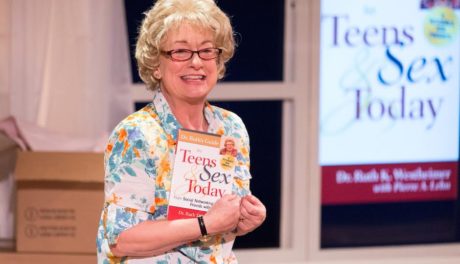
Thank you. Last Christmas, I was given the opportunity to play Dr. Ruth Westheimer here at the fabulous Walnut Street Theatre. This was a gift of a part. For a change, I didn’t have to start from scratch as there is so much footage of the actual Dr. Ruth who is alive and well and came to see the show—twice! No pressure. [She smiles]. I am nothing like her in so many ways: her incredible history, her physical stature, her accent, her gesture patterns—but her history exists in the way she moves and speaks, which is all a result of her life’s experience.
How do you go about developing a character?
Currently, as Juliana Smithton in The Other Place [by Sharr White], also at the Walnut, I am playing a woman who is essentially the brightest person in any room. She is an American, much smarter than I am, successful in a man’s world, has dealt with tragedy in her life, and built an effective armor. My decisions on how to play this role had to do with where this woman is centered. She is perceived as arrogant. So, I asked myself, “What is it that people see and hear that makes them feel this way? How does she sound, how does her sense of humor come across?”
The Other Place
How do you personally relate to Sharr White’s fascinating play, The Other Place?
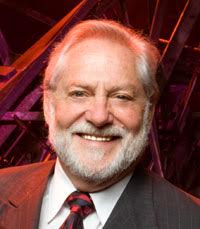
Ah, well in the name of “be careful what you wish for”—I had been thinking for a time that the experience of being with my Mother, who lived with Alzheimer’s for almost ten years, was one I wanted to explore in my work. Walnut Street Executive Artistic Director Bernard Havard and I were chatting about it and—one thing lead to another. And here we are, ten months later, and I find myself making that journey nightly.
The prime thing that I take away from my time with those navigating the uncharted territory of dementia is that the affect of a personal experience remains, even when memories disappear. Whether that experience is bad or good can depend in large measure upon the behavior and expectations of the caregivers.
In addition to your personal experience with your mother, did you also read up on dementia?
Yes. There is a marvelous book out there that helped my sisters and me find better ways to relate to our dear Mama. Contented Dementia by Oliver James. Within 24 hours of our putting into practice the simplest of suggestions, her anxiety level dropped and she was able to deal much more easily with the inevitable frustration of not knowing. I cannot recommend this book highly enough.

What did you do to prepare yourself psychologically for these constantly changing roles, given the mental deterioration of a star among scientists, now fading, first subtly and then rapidly, bringing up anger, suspicion, and paranoia?
Well, we are all human beings with relationships—familial and otherwise. The simplest answer to this question is “I imagine it” and let my humanity take over. The difficult part about doing it in this play is more technical. Because the story is not told in a linear fashion, I have to make the changes in a split second with no vestige of the scene before.
The Other Place also brings up the issue of strained relationships, in this case, husband and wife, mother and daughter, mother and son-in-law, and even patient and physician—all in fragmented ways, demanding different tones.
The brilliance of this play by Sharr White is that it is structured very much in the way that a person with dementia functions. What is happening now is absolutely true—even if something else, one second ago was equally true. This is the challenge that makes this play more than simply a sad story with flashes of dry humor.
Ultimately, we all carry seeds of that mysterious “other place” within us when we look at our families and friends.
True. The Other Place is a study of brilliance climbing the mountain of denial into realization and ultimately acceptance. I know it is not every person with dementia’s story. Quintessentially, it is Juliana’s, but so far everyone I have spoken to after seeing the play has a story to tell. I was touched by certain similarities to their experiences. This is what good plays do and I am so lucky to be a part of this one.
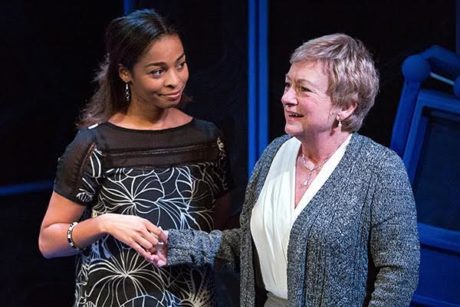
Some of your interactions with your fellow cast members are extremely intense. After each performance, do you give each other a group hug?
No, but sometimes we go out for wine. [She smiles.]
Curtain down
How do you feel when you get home, night after night, with exhausting roles as the lead character, and what do you do to survive the constant pressure to perform at the highest level?
Okay, trying not to wax philosophical here, but when you use the word “exhausting” what springs to my mind is the work done by the millions of men and women across this globe: Really hard work, physically draining work, eight hours a day or more, work that keeps the physical needs of the world met, the family fed, and the community held together.
You bring up powerful issues. Could you connect that work aspect to the theater world?
The work we do in the arts strikes me as essential in feeding the soul of the community, sharing what it means to be a human being—all equally essential in my mind. The cost is different. In its best form, the theater uses every part of an actor to take the journey of another human being on a day that is like no other.
Let’s face it, they don’t write plays about the day that nothing happened. So living through death, disaster, dementia—yes, it is tiring, and it requires a rest at the end of each performance—but, we get to live through a communal experience that feeds us as much as it feeds the audience. Every day. Eight times a week.
Jane, is there anything else you would like to share?
I seem to have gone on and on at alarming length. Thanks so much for talking with me. You certainly have given me much to think about.
The Other Place plays through October 30, 2016, in the Independence Studio on 3 at the Walnut Street Theatre – 825 Walnut Street, in Philadelphia, PA. For tickets, call the box office at (800) 982-2787, or purchase them online.


